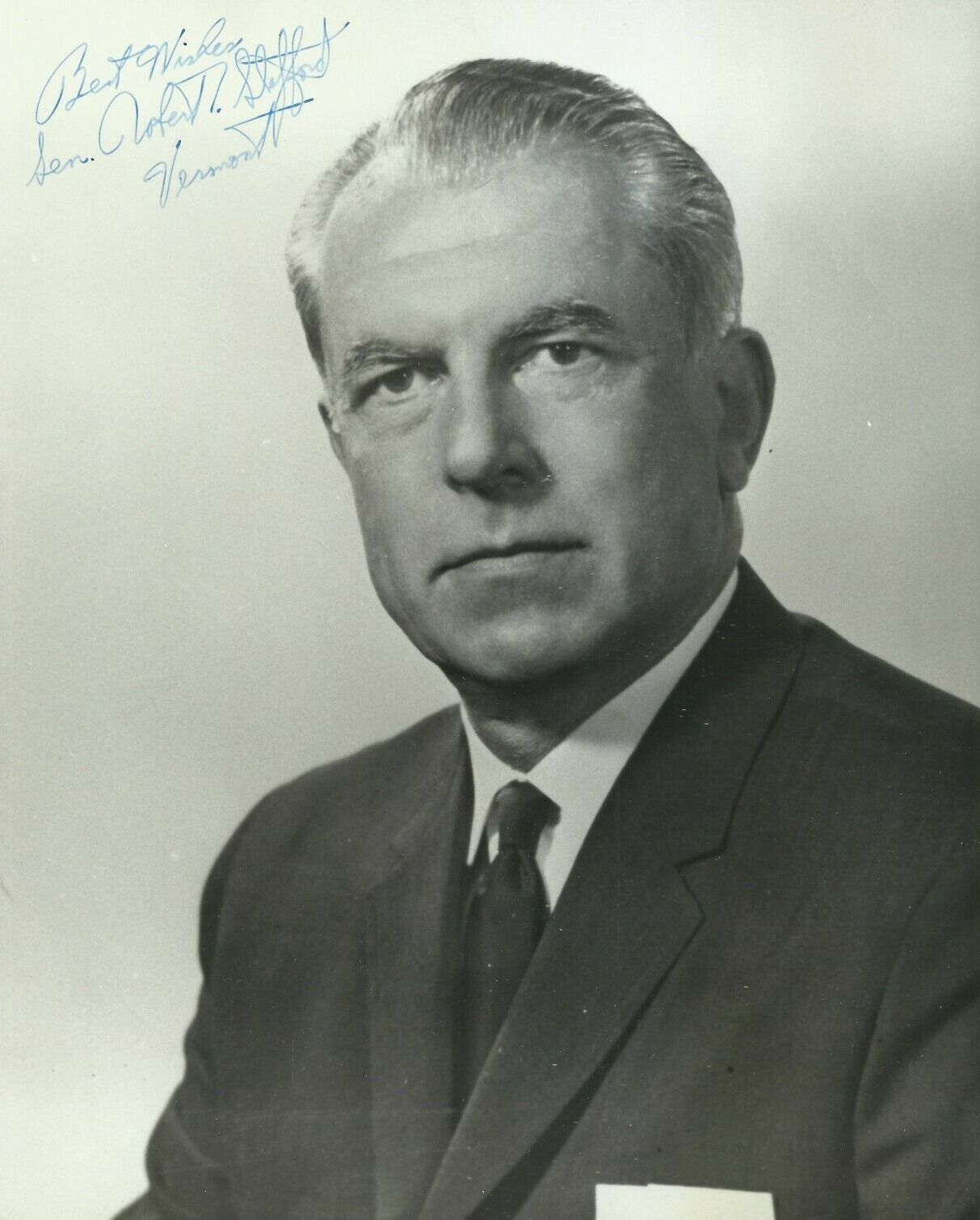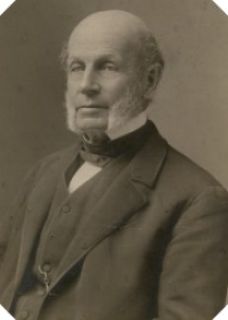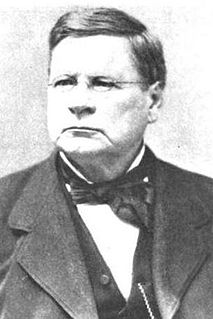
Robert Theodore Stafford was an American politician from Vermont. In his lengthy political career, he served as the 71st governor of Vermont, a United States Representative, and a U.S. Senator. A Republican, Stafford was generally considered a liberal, or "Rockefeller" Republican.

Ernest William Gibson Jr. was an American attorney, politician, and judge. He served briefly as an appointed United States Senator, as the 67th governor of Vermont, and as a federal judge.

Lawrence Brainerd was an American businessman, abolitionist and United States Senator from Vermont. A longtime anti-slavery activist, after leaving the Jacksonians in the 1830s, Brainerd was active in the Whig, Liberty, and Free Soil parties, and was one of the organizers of the Republican Party when it was formed as the main anti-slavery party in the mid-1850s. Brainerd's longtime commitment to the cause of abolition was recognized in 1854, when opponents of slavery in the Vermont General Assembly chose him to fill a five-month vacancy in the United States Senate.

Edward Curtis Smith was an American attorney, businessman, and politician from Vermont. A Republican, he was most notable for his service as the 47th governor of Vermont from 1898 to 1900.

The lieutenant governor of Vermont is elected for a two-year term and chosen separately from the governor. The Vermont Lieutenant Governor's main responsibilities include acting as governor when the governor is out of state or incapacitated, presiding over the Vermont Senate, casting tie-breaking votes in the Senate when required, and acceding to the governorship in case of a vacancy. As a member of the state senate's Committee on Committees, the lieutenant governor plays a role in determining committee assignments for individual senators, as well as selecting committee chairs, vice chairs, and clerks.

Frederick Holbrook was an American farmer and businessman from Vermont. Active in politics and government, first as a Whig, and later as a Republican, he was most notable for his service as the 27th governor of Vermont from 1861 to 1863.

Peter Thacher Washburn was a Vermont lawyer, politician and soldier. A veteran of the American Civil War, he served as the 31st governor of Vermont as a Republican from 1869 to 1870, and was the first Vermont Governor to die in office.

Henry Addison Fletcher was an American Civil War veteran, a farmer and a U.S. politician of the Republican Party. He is most notable for his service as the 38th lieutenant governor of Vermont from 1890 to 1892.

Stephen Royce was an American lawyer, judge and politician. He served as the 23rd governor of Vermont from 1854 to 1856.

Levi Underwood was a lawyer and politician from Vermont. Originally a Democrat, Underwood's antislavery views caused him to join the new Republican Party when it was founded. Underwood was most notable for his service as the 23rd lieutenant governor of Vermont from 1860 to 1862.

The 1866 Vermont gubernatorial election took place on September 4, 1866. In keeping with the "Mountain Rule", Incumbent Republican Paul Dillingham was a candidate for a second one-year term as governor of Vermont. With the election taking place soon after the American Civil War, Dillingham ran as a pro-Union Republican. The Democratic nomination was won by Charles N. Davenport of Wilmington, an attorney and founder of the Brattleboro Reformer newspaper, who was also the Democratic nominee in 1865. In the general election, Dillingham was easily elected to a second one-year term as governor.

The 1865 Vermont gubernatorial election took place on September 5, 1865. In keeping with the "Mountain Rule", incumbent Republican J. Gregory Smith, who had served two one-year terms, was not a candidate for reelection as governor of Vermont. With the election taking during the American Civil War, Dillingham ran as a pro-Union Republican. The Democratic nomination was won by Charles N. Davenport of Wilmington, an attorney and founder of the Brattleboro Reformer newspaper. In the general election, Dillingham was easily elected to a one-year term as governor.

The 1851 Vermont gubernatorial election was held on September 2, 1851. The state continued its support for the Whig party, and Whig Governor Charles K. Williams was easily re-elected to a one-year term. The strong showing of the Free Soil Party candidate Timothy P. Redfield also showed that Vermont was on its way to becoming an anti-slavery bastion. The Democratic nominee, John S. Robinson went on to win the governorship in 1853.

The 1854 Vermont gubernatorial election for governor of Vermont took place on September 5. The Whig nominee was Stephen Royce, former Chief Justice of the Vermont Supreme Court. The Democratic nominee was Merritt Clark, and Lawrence Brainerd ran as the nominee of the Free Soil Party even as he was one of the organizers of the new anti-slavery Republican Party and appeared as a Whig candidate for the Vermont Senate on the ballot in Franklin County. Whig William C. Kittredge was nominated for governor against his wishes by advocates of the Temperance movement and Democrat Horatio Needham also attracted the support of some Free Soil advocates.

The 1856 Vermont gubernatorial election for governor of Vermont was held on Tuesday, September 2. In keeping with the "Mountain Rule", incumbent Republican Stephen Royce was not a candidate for a third one-year term. The Republican nomination was won by Ryland Fletcher, the incumbent lieutenant governor. The Democratic nominee was Henry Keyes, a former member of the Vermont House of Representatives and Vermont Senate.

The 1858 Vermont gubernatorial election for governor of Vermont was held on Tuesday, September 7. In keeping with the "Mountain Rule", incumbent Republican Ryland Fletcher was not a candidate for a third one-year term. The Republican nominee was Hiland Hall. The Democratic nominee was Henry Keyes, who was also the Democratic nominee in 1856 and 1857.

The 1830 Vermont gubernatorial election took place in September and October, and resulted in the election of Samuel C. Crafts to a one-year term as governor.

The 1846 Vermont gubernatorial election took place on September 1, 1846, and resulted in the election of Whig Party candidate Horace Eaton to a one-year term as governor.

The 1844 Vermont gubernatorial election was held on September 3, 1844.

The 1845 Vermont gubernatorial election was held on September 2, 1845.
















